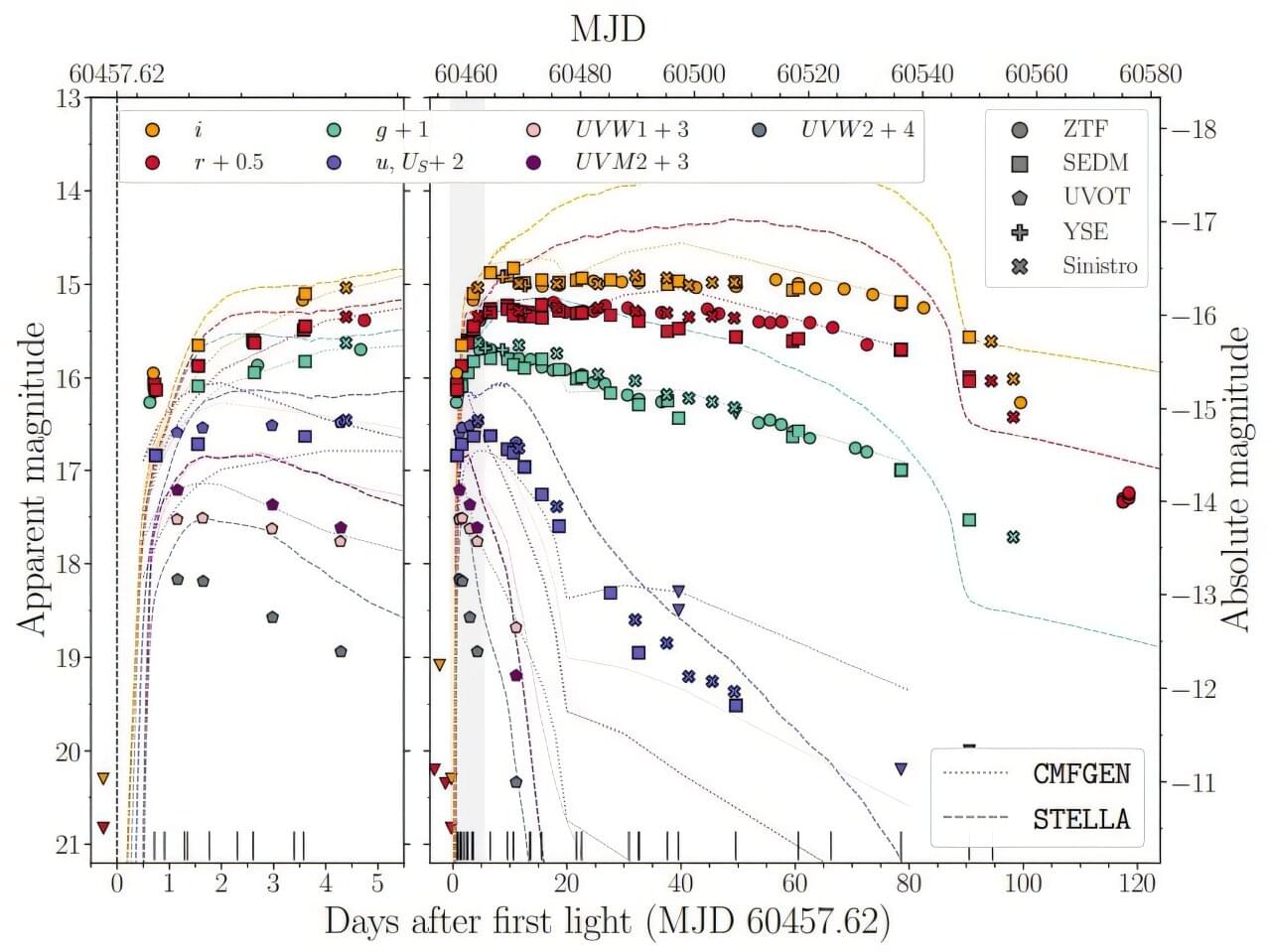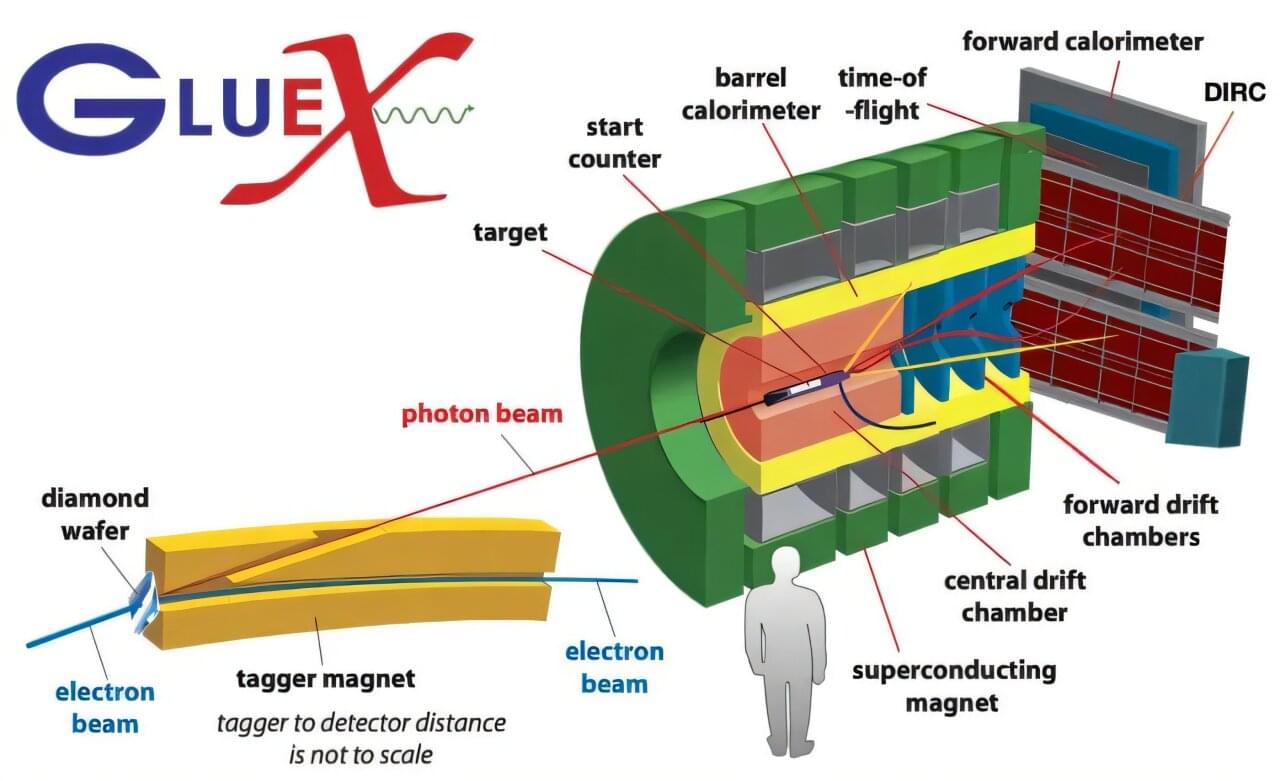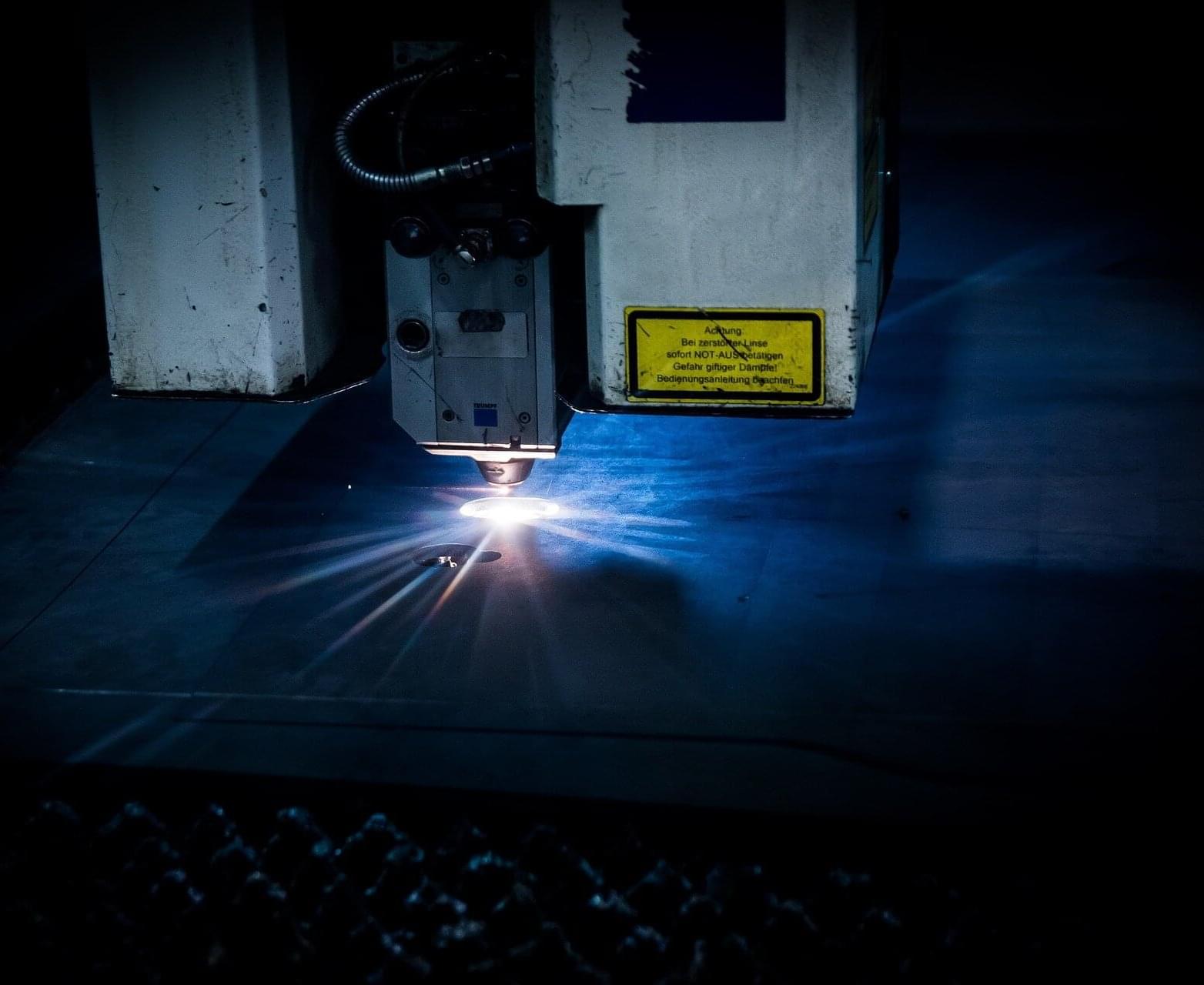An international team of astronomers has investigated a newly detected Type II supernova designated SN 2024jlf. The new study, detailed in a paper published Jan. 30 on the arXiv pre-print server, yields important information regarding the evolution of this supernova and the nature of its progenitor.
Type II supernovae (SNe) are the results of rapid collapse and violent explosion of massive stars (with masses above 8.0 solar masses). They are distinguished from other SNe by the presence of hydrogen in their spectra.
Based on the shape of their light curves, they are usually divided into Type IIL and Type IIP. Type IIL SNe show a steady (linear) decline after the explosion, while Type IIP exhibit a period of slower decline (a plateau) that is followed by a normal decay.









